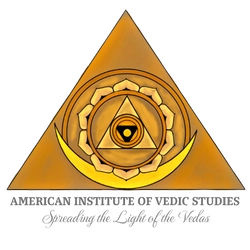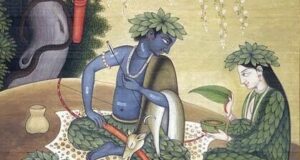The Original Soma: One Plant or Many
Soma is a great deity, cosmic power and yogic principle in ancient Vedic teachings, one of its central topics. It had its counterparts in the plant kingdom. There has long been a search for the identity of the original Soma plant and several plants have been proposed as representing it.
My view – based upon fifty years of study of the Vedas in the original Sanskrit, and related Ayurvedic literature – is that the Soma plant was not simply one plant, though there may have been one primary Soma plant in certain times and places, but several plants, sometimes a plant mixture, and more generally refers to the sacred usage of plants, connected to Yoga, mantra, meditation and the chakras.
Soma is mentioned as existing in all plants (RV X.97.7) and different types of Soma are indicated, some requiring elaborate preparations. Water itself, particularly that of the Himalayan rivers, is a kind of Soma (RV VII.49.4). In Vedic thought, for every form of Agni or Fire, there is also a form of Soma. In this regard, there are many Somas throughout the universe.
Identity of the Soma Plant
Some scholars emphasize ephedra as the main Soma plant. Ephedra (Ma huang) was the main Soma plant of the Persians. It was probably one of the Soma like plants, but it does not the only type, nor does it resemble the characteristics of the primary Soma plants described in the Rigveda.
Soma has a watery and oceanic symbolism in the Rigveda, growing near water (RV VIII.91.1) and flowing with a milky juice gained by crushing the plant. The sacred Hindu temple of Somnath. Shiva as the Lord of Soma, is located on the oceanside in Gujarat. Soma is connected with Shiva as the deity of higher states of consciousness.
Others propose that the original Soma was the Amanita muscari mushroom, used by many shamans. While this mushroom may have been a kind of Soma, Vedic Somas are described in different ways. The Soma plant is described with leaves and is often said to grow in water.
Sharyanavat, the main Rigvedic Soma land means ‘abounding with reeds’, with shara (Saccharum sara) being a type of reed related to sugarcane. Another great Soma land of Munjavat also means ‘abounding with reeds’ with munja a type of reed related to Shara and considered to be the best of the Somas. Some scholars identify Soma with the sugar cane, another Saccharum species cultivated in ancient India.
Types of Soma Plants
Atharva Veda (AV XI.6.15) mentions five powerful plants of which Soma is the best, including marijuana, barley and darbha (kusha or durva), showing that many plants had Soma-like qualities.[1] Soma is again connected with a reed (darbha, Saccharum cylindricum), which could have been pressed to get a juice, much like sugarcane.
Soma is also connected with marijuana, suggesting that mind-altering plants were regarded as different types of Soma plants. Soma is in other places connected with kushta (Saussurea lappa), a spicy nervine, and with the Ashvattha fig tree and said to grow in the Himalayas in the Atharva Veda (AV XIX.39.5, 6).
Soma is described as having leaves that come out in a circular pattern like the Moon and suggests lotuses. Additional potential Soma like plants are members of the orchid and lily families. A number of these are nervines.
Soma was prepared in three forms, as cooked with grain or barley (yava), milk (go) or curds (dadhi).[2] Somas could be part of elaborate preparations. Soma was used with ghee (ghrita) and honey (madhu), which are sometimes synonyms for Soma. In fact, Soma was often called madhu (honey or mead). Special herbal honey preparations and ghee preparations were additional types of Somas. Soma, however, was discriminated from Sura or wine and alcohol, though fermentation may have been used in preparing some types of Somas.
The ancient Ayurvedic doctor, Sushruta, mentions 24 Soma plants, growing on Himalayan lakes and named after Vedic meters. He mentions 18 additional Soma like plants, which are mainly nervine herbs.
Soma, therefore, was part of an entire science of sacred plant preparations and not just one plant in particular. A number of Soma-producing and Soma-like plants existed. The search for one single Soma plant is misleading.
Soma was also connected to the practice of alchemy and as early as the Rig Veda, it was prepared with gold and possibly lapis lazuli, perhaps even with sea shells or pearls.
Soma, Drugs and Psychedelics
Some would equate Soma with various psychedelics and mind-altering herbs used by humanity since ancient times. These may have been types of Soma plants but cannot simply be equated with Soma that has a much more complex and cosmic symbolism. Many other types of Soma plants also existed.
Vedic Soma as a sacred plant and the Vedic development of Soma at a mystical and spiritual level required purification of body, senses and mind. It was not simply an intoxicant.
The Yogic Soma is a secretion in the brain from practices of pranayama, mantra and meditation (an elixir prepared from the Tarpak Kapha or form of Kapha lubricating the nervous system in Ayurvedic thought).
Soma at a yogic level refers to the crown chakra or thousand petal lotus of the head, which is opened by Indra (yogic insight) and releases a flood of bliss throughout the body. This inner Soma is the main subject of the Vedic hymns, though outer Somas were also important.
In conclusion, it is wrong to look for a single Soma plant. Rather, Soma is part of the ancient, yogic and shamanic usage of sacred plants, including tonics, nervines and mind-altering plants of various types as well special preparations of them. Soma is a transformative substance that can be found in plants and has corresponding mind-altering substances that can be produced by the brain itself, with higher Somas of a purely mystical and meditative nature.
OM Shreem Somaya Namah!
[1] AV XI.6.15. The five great plants, of which Soma is the best, appear to be Soma, darbha (a kind of grass), bhanga (marijuana), yava (barley) and sahas (identity unknown).
[2] RV II.42,7, RV IX.63.15
https://www.amazon.com/Soma-Yoga-Ayurveda-Rejuvenation-Immortality/dp/0940676214
https://www.vedanet.com/courses/yoga-ayurveda-mantra-meditation-course/
David Frawley







